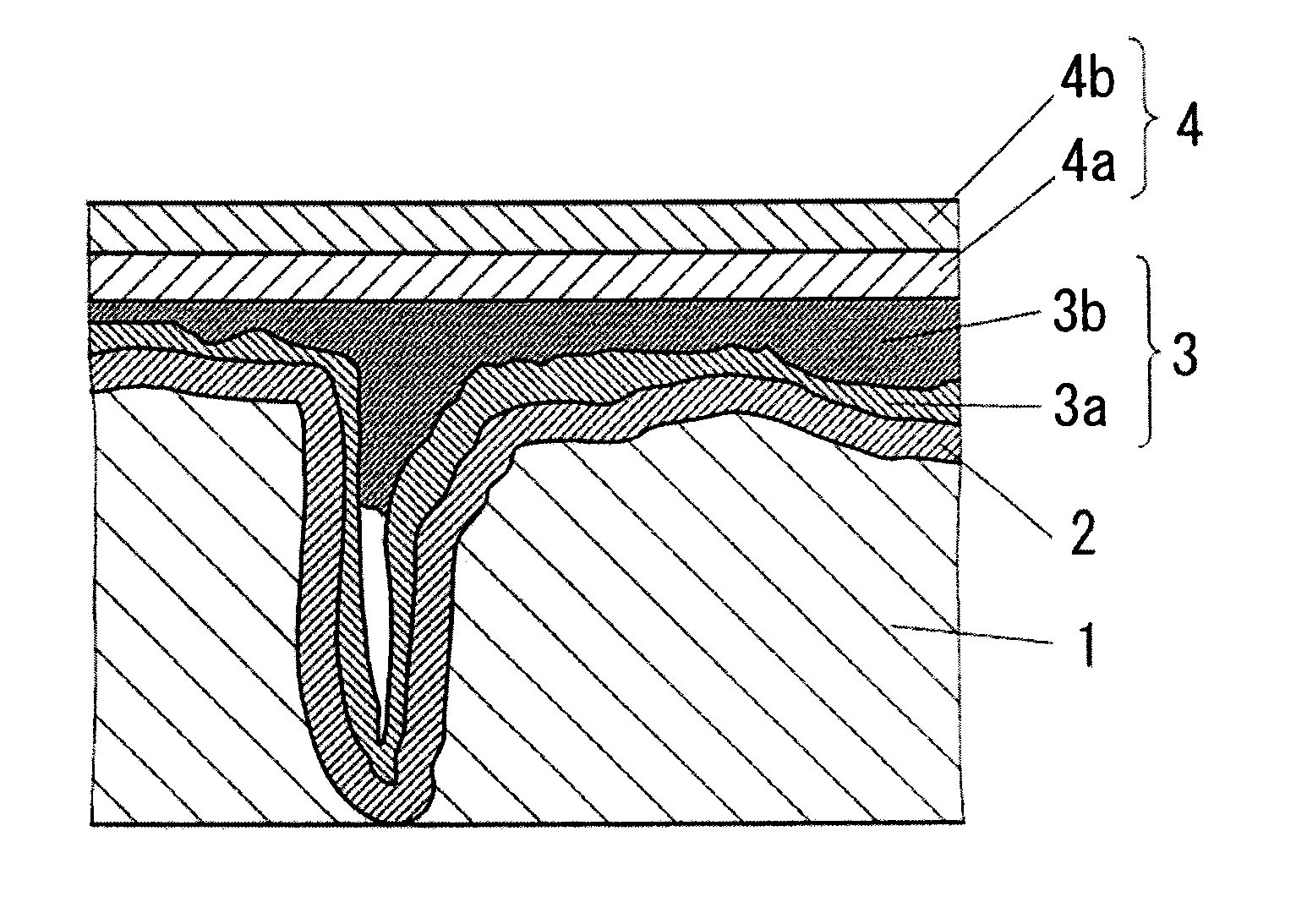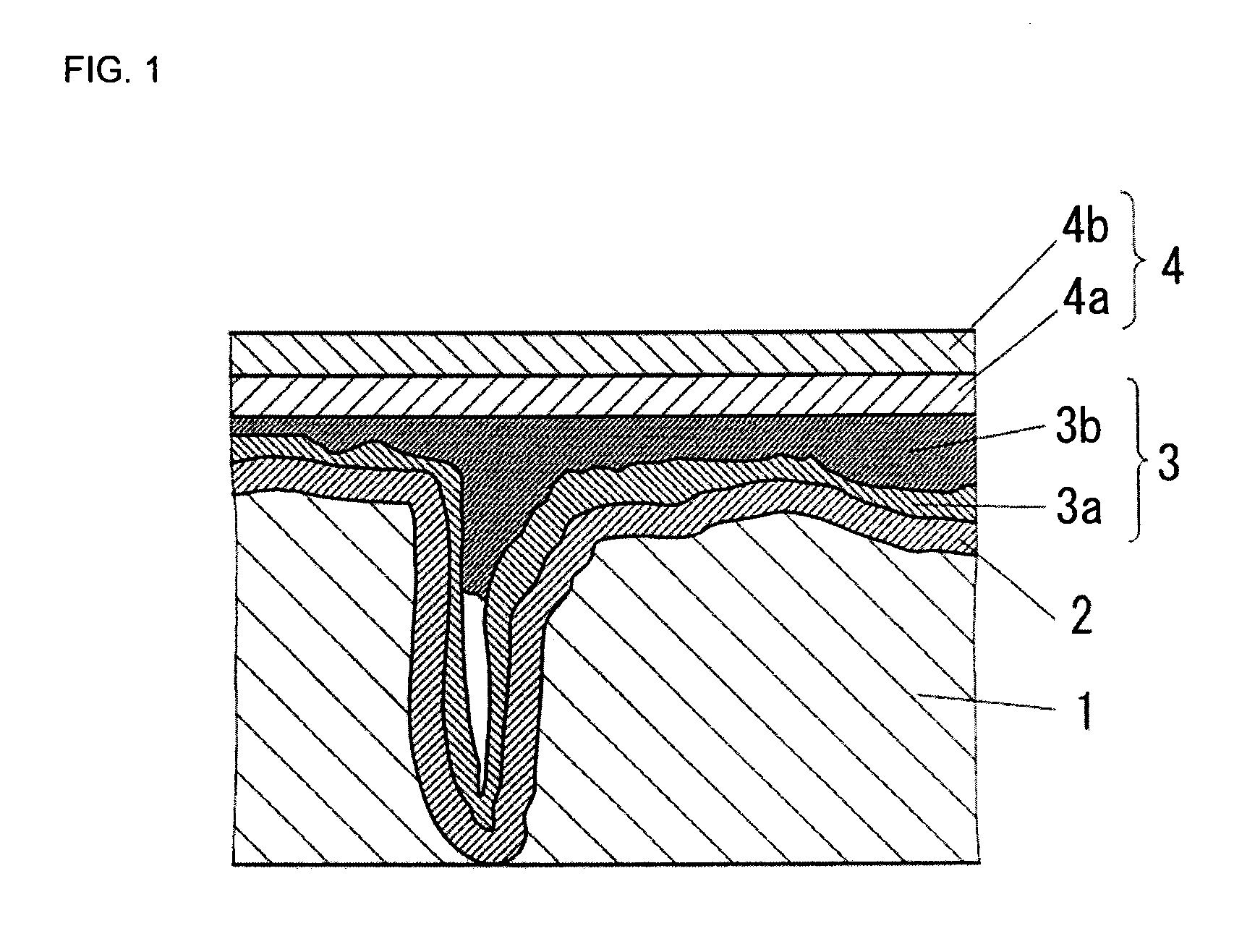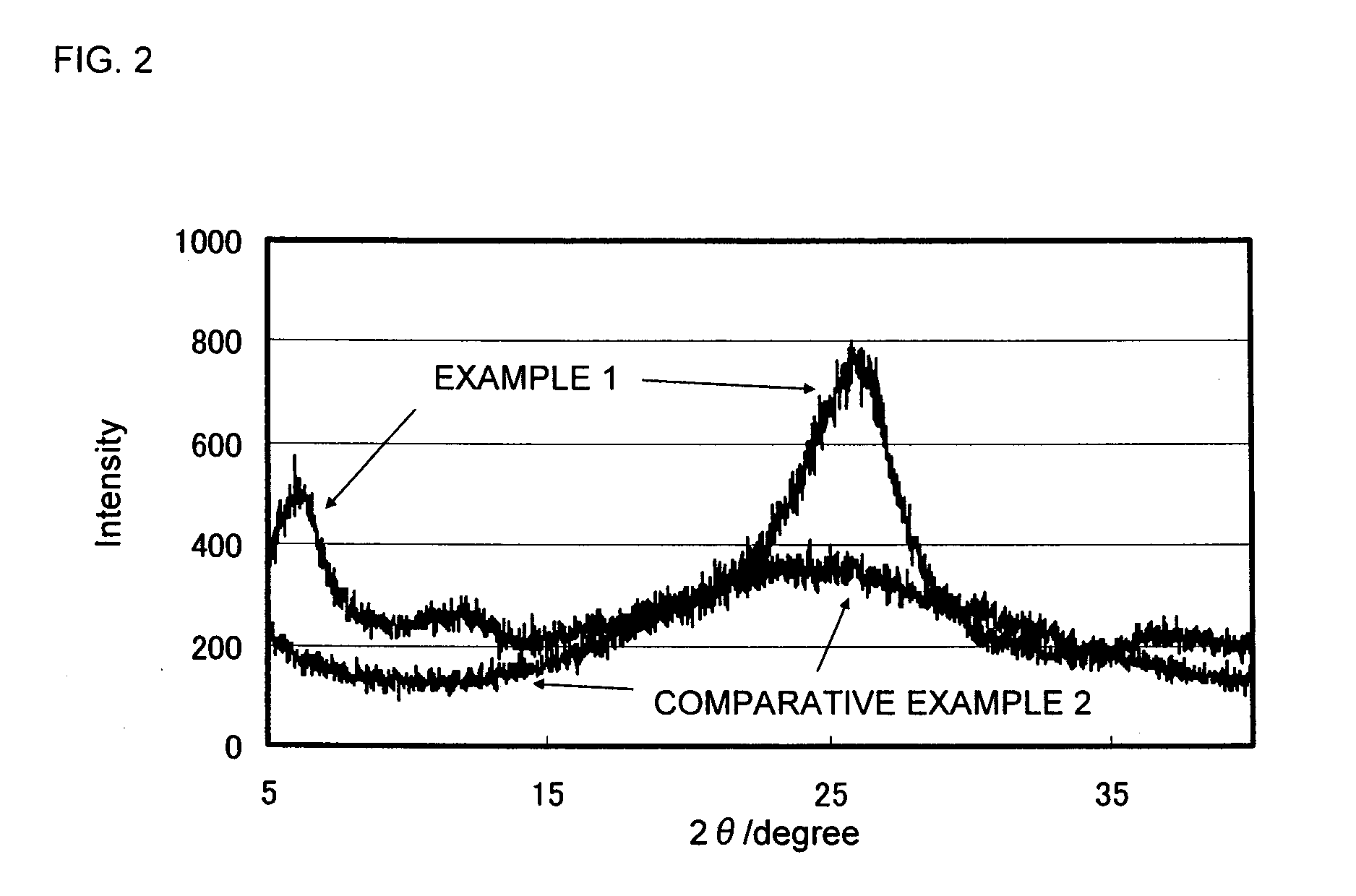Conductive polymer suspension and method for producing the same, conductive polymer material, and solid electrolytic capacitor and method for producing the same
a technology of conductive polymer suspension and solid electrolytic capacitor, which is applied in the direction of conductive materials, fixed capacitors, packaging, etc., can solve the problems of difficult to say that this method is sufficient, difficult to achieve conductivity that sufficiently meets the requirements of lower esr, and difficult to control the doping rate. achieve the effect of low esr and high conductivity
- Summary
- Abstract
- Description
- Claims
- Application Information
AI Technical Summary
Benefits of technology
Problems solved by technology
Method used
Image
Examples
example 1
(Step (a))
[0075]3,4-ethylenedioxythiophene as the monomer (M1) was added to 100 ml of water at a concentration of 0.2 mol / L, and polyethylene glycol monostearate (n=40) as the nonionic surfactant (S1) was further added at a concentration of 25 mmol / L. Then, the mixture was stirred at room temperature for 1 hour to emulsify the monomer (M1) in the water. Here, the HLB value of polyethylene glycol monostearate (n=40) calculated by the Griffin method is 17.4. Then, toluenesulfonic acid as a dopant was added at a concentration of 0.4 mol / L, and ammonium persulfate as the oxidant (O1) was further added at a concentration of 0.5 mol / L. The obtained emulsion was stirred at room temperature for 24 hours to perform the chemical oxidative polymerization of 3,4-ethylenedioxythiophene to synthesize poly(3,4-ethylenedioxythiophene). At this time, the emulsion changed from yellow to dark blue.
(Step (b))
[0076]The emulsion after the polymerization was filtered using a reduced-pressure filtration ap...
example 2
[0080]A polythiophene suspension was produced as in Example 1, except that polyethylene glycol monocetyl ether (n=23) was used as the nonionic surfactant (S1), and the average particle diameter of the particles contained in the polythiophene suspension was calculated. Here, the HLB value of polyethylene glycol monocetyl ether (n=23) calculated by the Griffin method is 16.5. In addition, a conductive polymer film was formed as in Example 1, except that this polythiophene suspension was used, and the conductivity of the conductive polymer film was calculated. The result is shown in Table 1.
example 3
[0081]A polythiophene suspension was produced as in Example 1, except that 3,4-ethylenedioxythiophene as the monomer (M1) was added at a concentration of 0.5 mol / L, and the average particle diameter of the particles contained in the polythiophene suspension was calculated. In addition, a conductive polymer film was formed as in Example 1, except that this polythiophene suspension was used, and the conductivity of the conductive polymer film was calculated. The result is shown in Table 1.
PUM
| Property | Measurement | Unit |
|---|---|---|
| particle diameter | aaaaa | aaaaa |
| particle diameter | aaaaa | aaaaa |
| temperature | aaaaa | aaaaa |
Abstract
Description
Claims
Application Information
 Login to View More
Login to View More - R&D
- Intellectual Property
- Life Sciences
- Materials
- Tech Scout
- Unparalleled Data Quality
- Higher Quality Content
- 60% Fewer Hallucinations
Browse by: Latest US Patents, China's latest patents, Technical Efficacy Thesaurus, Application Domain, Technology Topic, Popular Technical Reports.
© 2025 PatSnap. All rights reserved.Legal|Privacy policy|Modern Slavery Act Transparency Statement|Sitemap|About US| Contact US: help@patsnap.com



